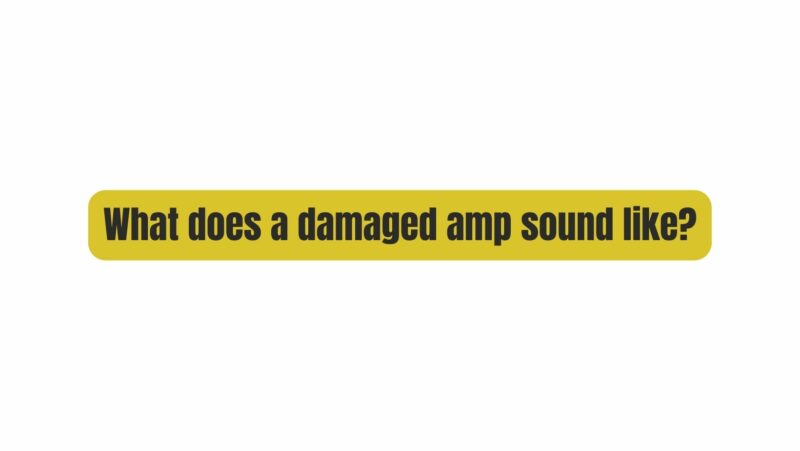Amplifiers are the workhorses of the music world, serving as the backbone of sound reinforcement for musicians and audio professionals. However, like any electronic device, amplifiers are susceptible to damage over time, and understanding the signs of a damaged amp is crucial for maintaining top-notch sound quality. In this article, we’ll delve into the world of damaged amplifiers and explore what they sound like when they’re not performing at their best.
Common Types of Amp Damage
Before we dive into the sonic effects of a damaged amp, let’s first understand the common types of damage that can occur:
- Tube Failure: Many guitar and some audio amplifiers use vacuum tubes. Over time, these tubes can fail or become microphonic, leading to issues with sound quality.
- Speaker Damage: Speakers are an integral part of any amplifier setup. Damage to the speaker cone, voice coil, or suspension can result in distorted sound.
- Electronic Component Failure: Amplifiers are filled with various electronic components such as capacitors, resistors, and transistors. When these components fail, it can impact the amplifier’s performance.
- Wiring Issues: Loose or damaged wiring connections can lead to signal loss, grounding problems, or intermittent noise.
- Overheating: Running an amplifier at high volumes for extended periods can cause it to overheat, potentially damaging internal components.
The Sonic Effects of a Damaged Amp
Now that we’ve covered the common types of amp damage, let’s explore how these issues manifest in the sound produced by the amplifier.
- Distortion and Clipping: One of the most noticeable effects of a damaged amp is distortion or clipping. This occurs when the amplifier is unable to cleanly reproduce the input signal. The sound becomes harsh, fuzzy, and generally unpleasant. It’s often described as a “gritty” or “crunchy” sound.
- Hissing and Humming: Electronic component failure or poor grounding can introduce unwanted noise into the signal path. This noise can manifest as hissing, humming, or buzzing sounds. These noises are particularly noticeable during quiet passages or when the amplifier is idle.
- Uneven Frequency Response: Damaged components, such as capacitors, can affect the amplifier’s ability to reproduce certain frequencies accurately. This can result in an uneven frequency response, with some frequencies being overly pronounced while others are attenuated.
- Loss of Clarity and Definition: A damaged amp may lose its ability to provide clear and defined sound. Notes may blend together, making it difficult to distinguish individual instruments or voices in a mix. This loss of clarity can be frustrating for musicians and audiophiles striving for precision in their sound.
- Intermittent Issues: Wiring problems or loose connections can lead to intermittent issues where the sound quality fluctuates unpredictably. This can be especially frustrating during live performances or recording sessions when consistency is essential.
- Speaker Rattling and Distress: When a speaker is damaged, you may hear rattling or buzzing sounds. This is typically the result of a damaged cone or voice coil. These sounds can be quite alarming and are a clear indication that the speaker requires attention.
- Reduced Output: Overheating or component failure can lead to a reduction in the amplifier’s overall output. This means that even when you turn up the volume, the amp may not produce the expected level of sound, making it challenging to achieve the desired volume for a performance.
- Unpredictable Behavior: In some cases, a damaged amp may exhibit unpredictable behavior. It might cut in and out, produce bursts of noise, or even fail entirely, leaving you with no sound at all.
Conclusion
In conclusion, a damaged amp can produce a wide range of undesirable sonic effects, from distortion and noise to a loss of clarity and definition. Recognizing these signs is essential for musicians and audio professionals to address issues promptly and prevent further damage. Regular maintenance and proper care can go a long way in preserving the quality and longevity of your amplifier. If you suspect that your amp is damaged, it’s advisable to consult with a professional technician to diagnose and repair the issue, ensuring that your music continues to sound its best.


